The 7c National Sheep Breed Improvement Levy introduced in 2012 on sheep processed in Ireland’s five main factories to help fund Sheep Ireland is set to increase to 15c per animal from 1 April 2023.
The mandatory levy will continue to be collected in sheep processed in Dawn Meats, Kepak, Kildare Chilling and Irish Country Meats plants in Camolin and Navan.
The contribution of the levy over the last decade has raised an average of €180,000 in funding per annum. It is described as being pivotal to the success of the National Breed Improvement Programme and, in particular, in “enabling the expansion of services and knowledge transfer, ultimately leading to a more significant genetic gain of the national flock.”
Key priority areas
Kevin McDermott, programme manager with Sheep Ireland, explains that the increase in the levy will fund further progress in several key areas with three identified as high priority as follows.
To ensure the long-term success of the hill sector breed improvement, Sheep Ireland would like to invest further in this area via genotyping subsidies and more human resources, both on the ground collecting animal data and in the office providing technical support.To identify the bloodlines that produce the least methane while sustaining the same level of output, we need to collect more methane data on an annual basis from a wide range of flocks with parentage information.We know that anthelmintic resistance is a big issue coming down the tracks. We know that breeding can help slow down that train. To be in a position to identify the bloodlines that produce the least number of worms, we need to capture faecal egg count (FEC) data on individual animals (eg Central Progeny Test – CPT, LambPlus) on an annual basis. Sheep Ireland wants to invest in this area now.Kevin adds that all farming organisations have been consulted in relation to this change, which has been approved by the board of Sheep Ireland.
Milestone achievements
Kevin says the National Sheep Improvement Programme has come a long way since its inception. The LambPlus programme, which is the performance-recording programme run by Sheep Ireland, has grown from 180 flocks to over 1,000 flocks participating in 2022 and 1,300 flocks signed up for the 2023 season.
This increase has underpinned a major increase in information being recorded on the national database with the number of weight records collected, for example, more than doubling to 70,000 records per year.
“We are also investing in new technologies to advance breeding progress. Sheep Ireland has also introduced a genomic service that allows farmers to test their animals genomically without much complexity."
Genomics gives the power to predict and verify parentage
“This service has resulted in over 75,000 animals getting genotyped to date, with almost 14,000 animals genotyped in the last year alone.”
Genomics
“Genomics gives the power to predict and verify parentage, provide Scrapie genotype status and provide DNA information that can help predict how that animal (or their lambs) will perform in the future.”
Sheep Ireland has subsidised lowland and hill sheep farmers to cover the cost of genotyping and Kevin says continuing this subsidy, especially in the hill sheep sector, is vital.
Kevin lists other key achievements as follows:
Sheep Ireland ram search: launched in 2015, www.ramsearch.ie allows farmers to source performance-recorded rams with visits to the site growing from 20,000 in its first year to over 100,000 in 2022. The organisation plans to add more features in 2023 to allow farmers meet the requirements of the Sheep Improvement Scheme.
Flockbook consolidation: in 2023, all 17 flockbooks will be hosted on the national database. Kevin says consolidation of flockbook data reduces the administrative burden compared to having two recording systems in place and allows for greater development and efficiency of data recording and analysis.
Commercial evaluations: a common criticism of pedigree breeding or genetic evaluations which have pedigree data included is that pedigree flocks often have much higher levels of intervention whether this be the feeding of concentrates, supervision at lambing, etc. The CPT is an integral part of the National Sheep Breed Improvement Programme and allows evaluations to be tested in a commercial setting where over 2,100 ewes are run across four farms. Kevin says the CPT has also underpinned the launch of Across-Breed Genomic evaluations in 2021, the first sheep breeding programme in the northern hemisphere to do so. This resource is vital in continuing to test the validity of information and is now also being used, along with Teagasc research flocks and LambPlus flocks, to capture information on methane.
Flock performance app: a flock performance app is available, according to Kevin, free for all sheep farmers in Ireland. The app is predominantly used by pedigree breeders but Sheep Ireland wants to develop the app further to reduce barriers to data recording and increase the volume of data feeding into the national database. When asked about the return on investment from funds allocated to Sheep Ireland Kevin McDermott presents research carried out by New Zealand company, Abacus Bio.
“Between 2014 (when the National Sheep Breed Improvement Programme started to gather momentum) and 2020, the programme has added €17m of value to the industry. If the programme continues to develop, it is predicted that between 2020 and 2040, it will deliver an additional €115m to the Irish sheep industry.
“If we break this down to flock level, research was undertaken in 2022 by Teagasc and Sheep Ireland investigating the physical, financial and environmental performance of a low genetic merit flock (one-star) and a high genetic merit flock (five-star).
“The five-star flock produced an extra 0.17 lambs per ewe via increased lambing percentage and better lamb survival. Those lambs also finished 13 days faster and when all the physical differences in performance were analysed, the net profit per ewe differed by €18 (€45 v €27), which equates to a 66% increase in profitability per ewe.”
Based on a life cycle analysis, the five-star flock produced 6.9% less greenhouse gas per kilo of carcase produced.
Larger difference
We expect this difference to become even larger after the introduction of the methane estimated breeding values.
The 7c National Sheep Breed Improvement Levy introduced in 2012 on sheep processed in Ireland’s five main factories to help fund Sheep Ireland is set to increase to 15c per animal from 1 April 2023.
The mandatory levy will continue to be collected in sheep processed in Dawn Meats, Kepak, Kildare Chilling and Irish Country Meats plants in Camolin and Navan.
The contribution of the levy over the last decade has raised an average of €180,000 in funding per annum. It is described as being pivotal to the success of the National Breed Improvement Programme and, in particular, in “enabling the expansion of services and knowledge transfer, ultimately leading to a more significant genetic gain of the national flock.”
Key priority areas
Kevin McDermott, programme manager with Sheep Ireland, explains that the increase in the levy will fund further progress in several key areas with three identified as high priority as follows.
To ensure the long-term success of the hill sector breed improvement, Sheep Ireland would like to invest further in this area via genotyping subsidies and more human resources, both on the ground collecting animal data and in the office providing technical support.To identify the bloodlines that produce the least methane while sustaining the same level of output, we need to collect more methane data on an annual basis from a wide range of flocks with parentage information.We know that anthelmintic resistance is a big issue coming down the tracks. We know that breeding can help slow down that train. To be in a position to identify the bloodlines that produce the least number of worms, we need to capture faecal egg count (FEC) data on individual animals (eg Central Progeny Test – CPT, LambPlus) on an annual basis. Sheep Ireland wants to invest in this area now.Kevin adds that all farming organisations have been consulted in relation to this change, which has been approved by the board of Sheep Ireland.
Milestone achievements
Kevin says the National Sheep Improvement Programme has come a long way since its inception. The LambPlus programme, which is the performance-recording programme run by Sheep Ireland, has grown from 180 flocks to over 1,000 flocks participating in 2022 and 1,300 flocks signed up for the 2023 season.
This increase has underpinned a major increase in information being recorded on the national database with the number of weight records collected, for example, more than doubling to 70,000 records per year.
“We are also investing in new technologies to advance breeding progress. Sheep Ireland has also introduced a genomic service that allows farmers to test their animals genomically without much complexity."
Genomics gives the power to predict and verify parentage
“This service has resulted in over 75,000 animals getting genotyped to date, with almost 14,000 animals genotyped in the last year alone.”
Genomics
“Genomics gives the power to predict and verify parentage, provide Scrapie genotype status and provide DNA information that can help predict how that animal (or their lambs) will perform in the future.”
Sheep Ireland has subsidised lowland and hill sheep farmers to cover the cost of genotyping and Kevin says continuing this subsidy, especially in the hill sheep sector, is vital.
Kevin lists other key achievements as follows:
Sheep Ireland ram search: launched in 2015, www.ramsearch.ie allows farmers to source performance-recorded rams with visits to the site growing from 20,000 in its first year to over 100,000 in 2022. The organisation plans to add more features in 2023 to allow farmers meet the requirements of the Sheep Improvement Scheme.
Flockbook consolidation: in 2023, all 17 flockbooks will be hosted on the national database. Kevin says consolidation of flockbook data reduces the administrative burden compared to having two recording systems in place and allows for greater development and efficiency of data recording and analysis.
Commercial evaluations: a common criticism of pedigree breeding or genetic evaluations which have pedigree data included is that pedigree flocks often have much higher levels of intervention whether this be the feeding of concentrates, supervision at lambing, etc. The CPT is an integral part of the National Sheep Breed Improvement Programme and allows evaluations to be tested in a commercial setting where over 2,100 ewes are run across four farms. Kevin says the CPT has also underpinned the launch of Across-Breed Genomic evaluations in 2021, the first sheep breeding programme in the northern hemisphere to do so. This resource is vital in continuing to test the validity of information and is now also being used, along with Teagasc research flocks and LambPlus flocks, to capture information on methane.
Flock performance app: a flock performance app is available, according to Kevin, free for all sheep farmers in Ireland. The app is predominantly used by pedigree breeders but Sheep Ireland wants to develop the app further to reduce barriers to data recording and increase the volume of data feeding into the national database. When asked about the return on investment from funds allocated to Sheep Ireland Kevin McDermott presents research carried out by New Zealand company, Abacus Bio.
“Between 2014 (when the National Sheep Breed Improvement Programme started to gather momentum) and 2020, the programme has added €17m of value to the industry. If the programme continues to develop, it is predicted that between 2020 and 2040, it will deliver an additional €115m to the Irish sheep industry.
“If we break this down to flock level, research was undertaken in 2022 by Teagasc and Sheep Ireland investigating the physical, financial and environmental performance of a low genetic merit flock (one-star) and a high genetic merit flock (five-star).
“The five-star flock produced an extra 0.17 lambs per ewe via increased lambing percentage and better lamb survival. Those lambs also finished 13 days faster and when all the physical differences in performance were analysed, the net profit per ewe differed by €18 (€45 v €27), which equates to a 66% increase in profitability per ewe.”
Based on a life cycle analysis, the five-star flock produced 6.9% less greenhouse gas per kilo of carcase produced.
Larger difference
We expect this difference to become even larger after the introduction of the methane estimated breeding values.




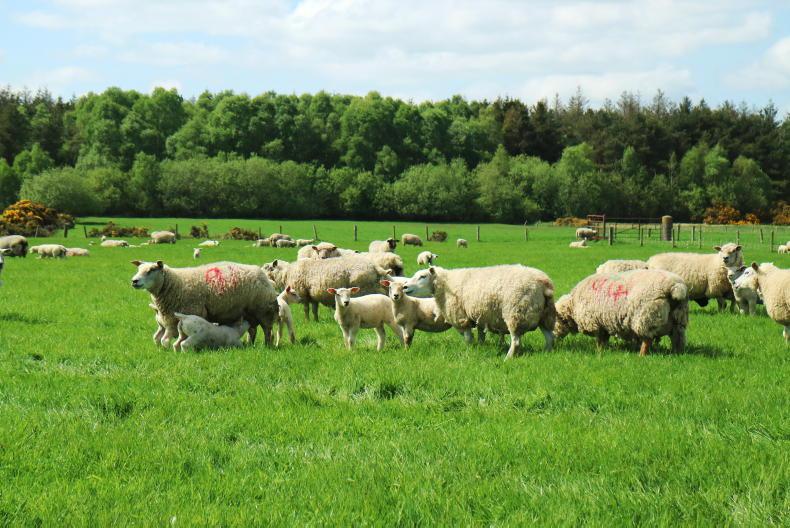
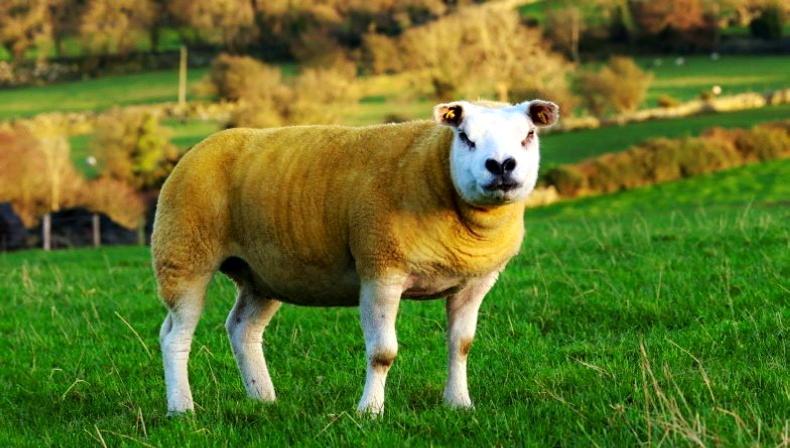
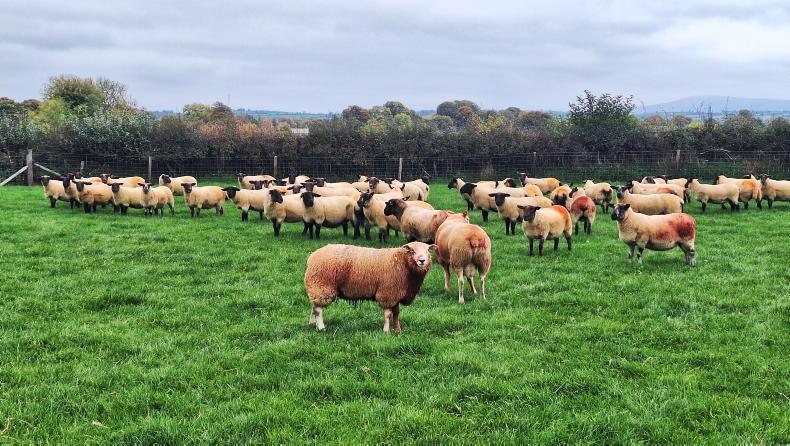
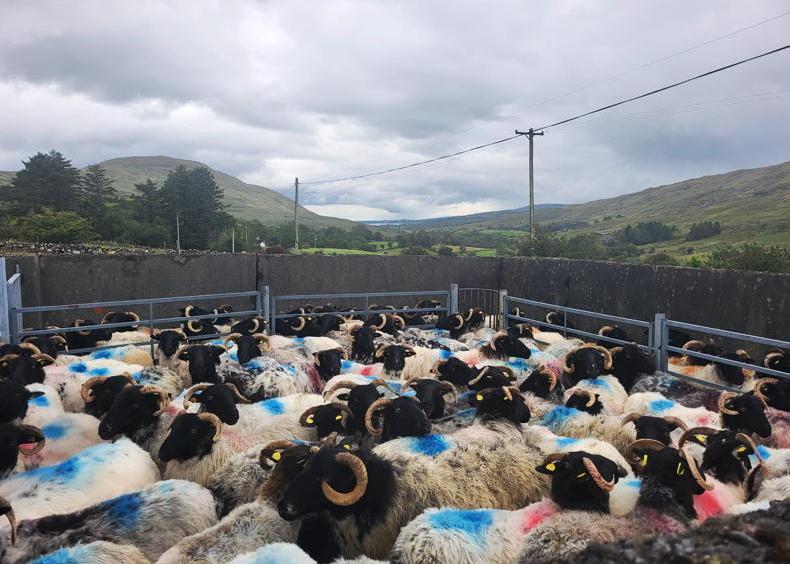
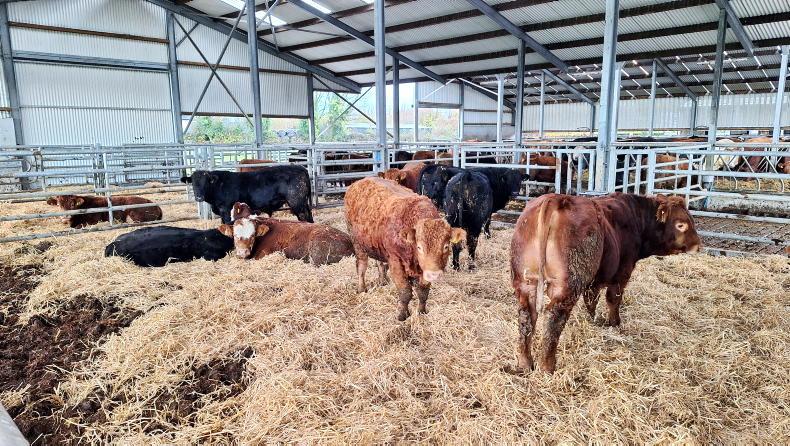
SHARING OPTIONS